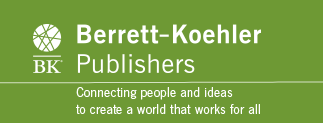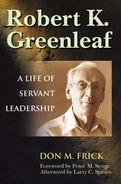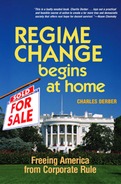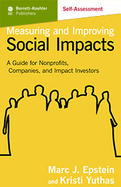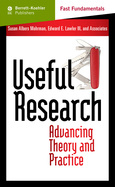2001
2004
This long-awaited biography of Robert Greenleaf, authorized by his surviving children, finally tells his story. Drawn from Greenleaf's personal papers, correspondence, and interviews with family and friends, it provides a fascinating look at the sources of Greenleaf's thought, his friendships with some of the most influential men and women of the twentieth century—including Eleanor Roosevelt, Peter Drucker, the Menninger brothers, Reinhold Niebuhr, Aldous Huxley, Alcoholics Anonymous co-founder Bill Wilson, and many others—and how he influenced business history well before his first book was published at the age of seventy-three.
At a time when leadership and management fads substitute as wisdom, Robert Greenleaf's life stories provide clues for how each person can make a difference in the workplace, no matter what position he or she holds.
- The first biography of Robert Greenleaf, originator of the immensely influential concept of "servant leadership" which plays a crucial role in the writings of today's most important business thinkers and has had an major impact on organizations of all types
- Explores the origin, development, basic concepts, and practical applications of the idea of servant leadership
- Greenleaf maintained friendships with some of the most important men and women of the twentieth century, including Eleanor Roosevelt, Peter Drucker, the Menninger brothers, Reinhold Niebuhr, Aldous Huxley, Alcoholics Anonymous founder Bill Wilson, and many others
- Includes a foreword by Peter M. Senge
- By the author of the internationally acclaimed books Corporation Nation, The Wilding of America, People Before Profit, and The Pursuit of Attention
- Shows that Americans are ruled not just by a particular administration but by a corporate regime, spanning several decades and incorporating both mainstream political parties, which puts the interests of big business ahead of those of ordinary Americans
- Offers hope-and detailed strategies and tactics-for defeating the corporate regime and returning America to its people
2004
Garrison traces the roots of the American empire to the very beginnings of the republic, in particular to the historic willingness of United States' to use military might in the defense of two consistent --- if sometimes contradictory --- foreign policy objectives: protection of American commercial interests and promotion of democracy.
How long can the American empire last? Garrison looks at American history within the context of the rise and fall of empires and argues that the U. S. can gain important insights into durability from the Romans. He details the interplay between military power, political institutions, and legal structures that enabled the Roman empire at it's apogee to last for longer than America has as a country.
But the real question is, what kind of empire can and should America be? As the sole superpower, America must lead in shaping a new global order, just as after World War II Roosevelt and Truman took the lead in shaping a new international order. That international order is now crumbling under the pressures of globalization, persistent poverty, terrorism and fundamentalism. Garrison outlines the kinds of cooperative global structures America must promote if its empire is to leave a lasting legacy of greatness. Garrison calls for Americans to consciously see themselves as a transitional empire, one whose task is not to dominate but to catalyze the next generation of global governance mechanisms that would make obsolete the need for empire. If this is done, America could be the final empire.
-
Asserts that America has already made the transition from republic to empire
-
Asks what kind of empire America can and should be, suggesting that America should consciously see itself as a new kind of empire, one that will work to make the notion of empire obsolete
-
Written by the President of the State of the World Forum, a global network whose members include such distinguished figures as Mikhail Gorbachev, Oscar Arias, George Schultz, Jane Goodall, and Elie Weisel
Offers a detailed, reliable, and proven approach to rigorously evaluating and increasing the social impact of philanthropic efforts.
Product: Online streamed self-assessment application (not downloaded), limited one-year subscription (5 tests or 12 months, whichever comes first), password controlled
Duration: The Assessment for Investors has 24 questions in seven categories. The Assessment for Operators has 24 questions in six categories. Each self-assessment takes 5-10 minutes to answer.
Results: You will receive a radar graph for both the Investor and Operator. The coauthors also offer detailed interpretation of your results from both the investor and operator perspectives. By reading your results, you can get important insights on how aligned you are with your organization, and how you can move towards better alignment. There are also opening and closing statements from the author, the ability to compare current and former results, and a print option.
BASED ON THE BOOK, MEASURING AND IMPROVING SOCIAL IMPACTS. Book summary: The world is beset with enormous problems that desperately need solutions. And as a nonprofit, NGO, foundation, impact investor, or socially responsible company, your organization is on a mission to provide those solutions.
But what exactly should you do? And how will you know whether it's working? Too many people assume that good intentions will result in meaningful actions and leave it at that. But thanks to Marc Epstein and Kristi Yuthas, social impact can now be evaluated with the same kind of precision achieved for any other organizational function.
Based on years of research and analysis of field studies from around the globe, Epstein and Yuthas offer a five-step process that will help you gain clarity about the impacts that matter most to you and will provide you with methods to measure and improve those impacts. They offer a systematic approach to deciding what resources you should invest, what problem you should address, and which activities and organizations you should support. Once you've made those decisions, they provide tools, frameworks, and metrics for defining exactly what success looks like, even for goals like reducing global warming or poverty that are extremely difficult to measure. Then they show you how to use the data you've gathered to further develop and increase your social impact.
Epstein and Yuthas personally interviewed leaders at over sixty different organizations for this book and include examples from nearly a hundred more. This is unquestionably the most complete, practical, and thoroughly researched guide to taking a rigorous, data-driven approach to expanding the good you do in the world.
PURCHASER AND USER NOTE: If you are an individual consumer newly purchasing the assessment, go directly to the shopping cart by clicking the "add to cart" icon to your left. If you are a member of an organization that has purchased a bulk order, or if you already bought the assessment in the last 12 months and are retaking it now using the original Access Key to retake the assessment please log in here. New registrants: Please enter your "Access Key" into the input field to enter the self-assessment for the first time (see bottom of page under "Please Note" for Social Impact Self-Assessment login link). A note to frequent purchasers: You cannot use your current bkconnection.com password for this product; you must create and use a new password. For any questions, please contact the support desk at 800-929-2929 (8 am-9 pm Eastern U.S. time, Monday through Friday), or [email protected]. Thank you.
